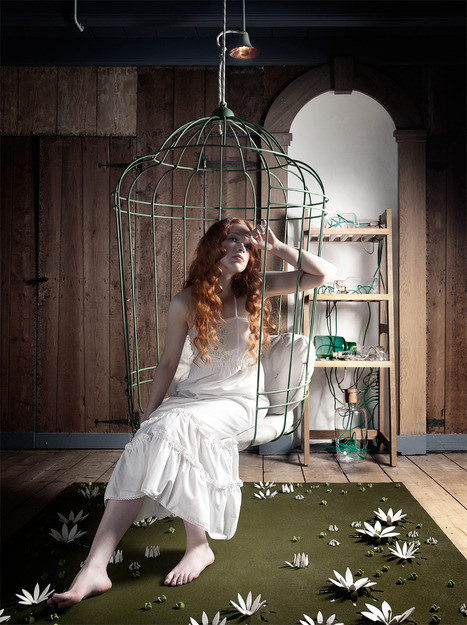There’s a red-headed girl in a cage at the bottom of my psyche. She is the victim-fear-child. She grows and shrinks in age, and yells obscenities at me. Fear always makes her scream or flinch. I can’t fix her, can’t remove her. Her hair reddens at the sound of rain and she dissolves into poetry… face of porcelain… her dress is always white lace and she claws… and she sits with legs with legs crossed. I watch her. When I don’t watch her she reaches up into my life and wreaks havoc. With eyes on her she is confined to the cage.

Her hair grows and shrinks. She screams at me until I turn away and draw bird cages, gold like her’s, on white canvas paper. I hold up a blank slate for her and she draws cages too. We laugh and I slide my fingers into the cage to find hers… dissolving into me.
I sit in the room and watch her. I cannot fix her of free her. Attempts only makes her violent. I visit her often and when I have extra… I feed her… peas and broth from a ceramic spoon. I reach my arms around the cage to find it dissolving, just a little, but it re-forms when I move away.
“It’s safe outside” I say, but if I remove the cage she only grows it back from the fear inside. It’s part of her. Some traumatised animals never leave the cage, even when the door is open… even when the cage is gone. The cage is inside their minds and the trauma continues in aftershocks. She knows this. She is this.
Awakened, she reaches up through the bars – a pain-body phantom. She claws at my heart and projects the pain into other people’s faces and my own personal failings. If I watch her, sit with her, she has company and sometimes she lets me scratch behind her ears. She responds to warmth… it melts the ice from the fear… melts the cage momentarily.
We watch each-other.
I can’t fix her…
but can I love her?















